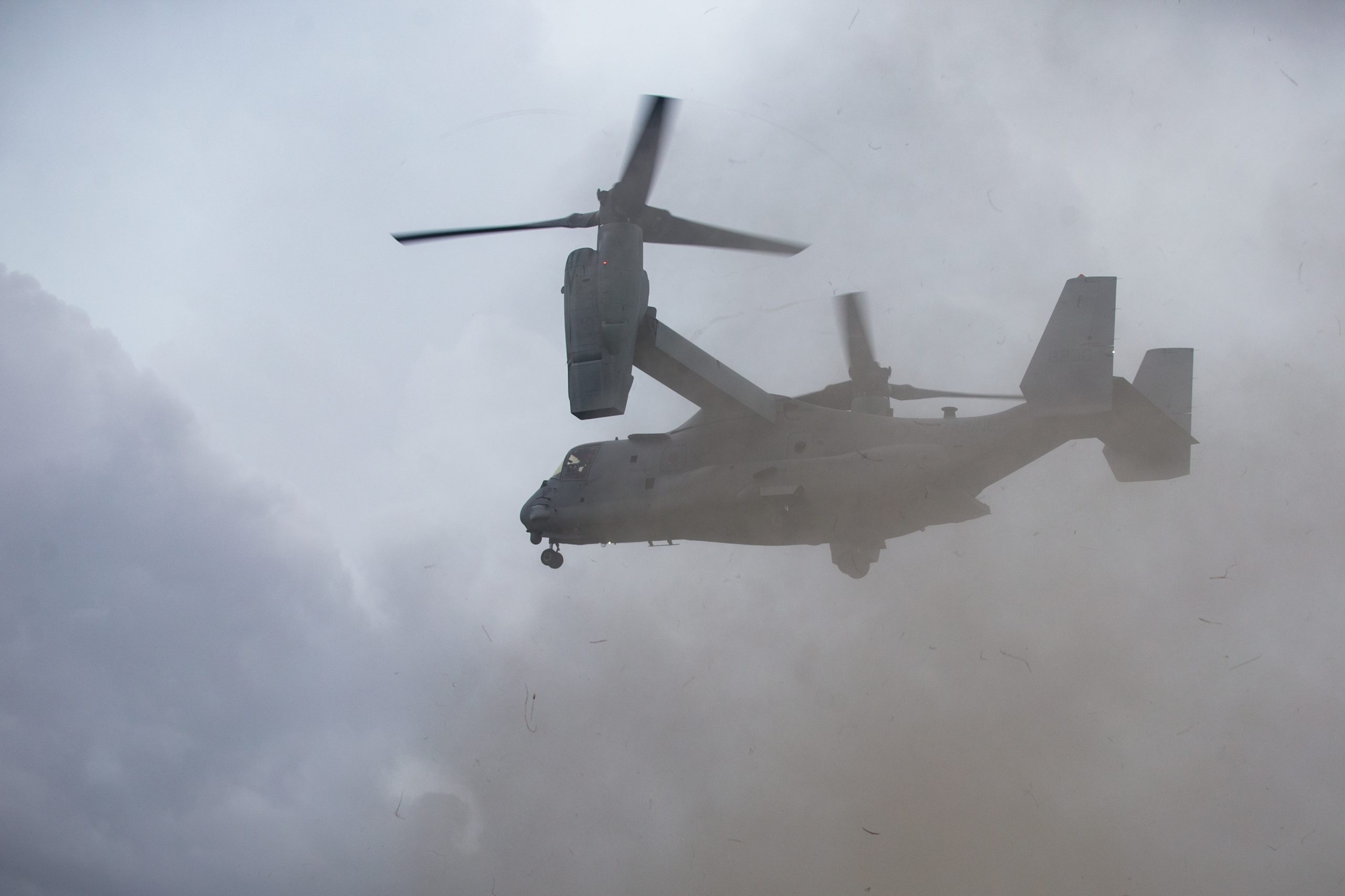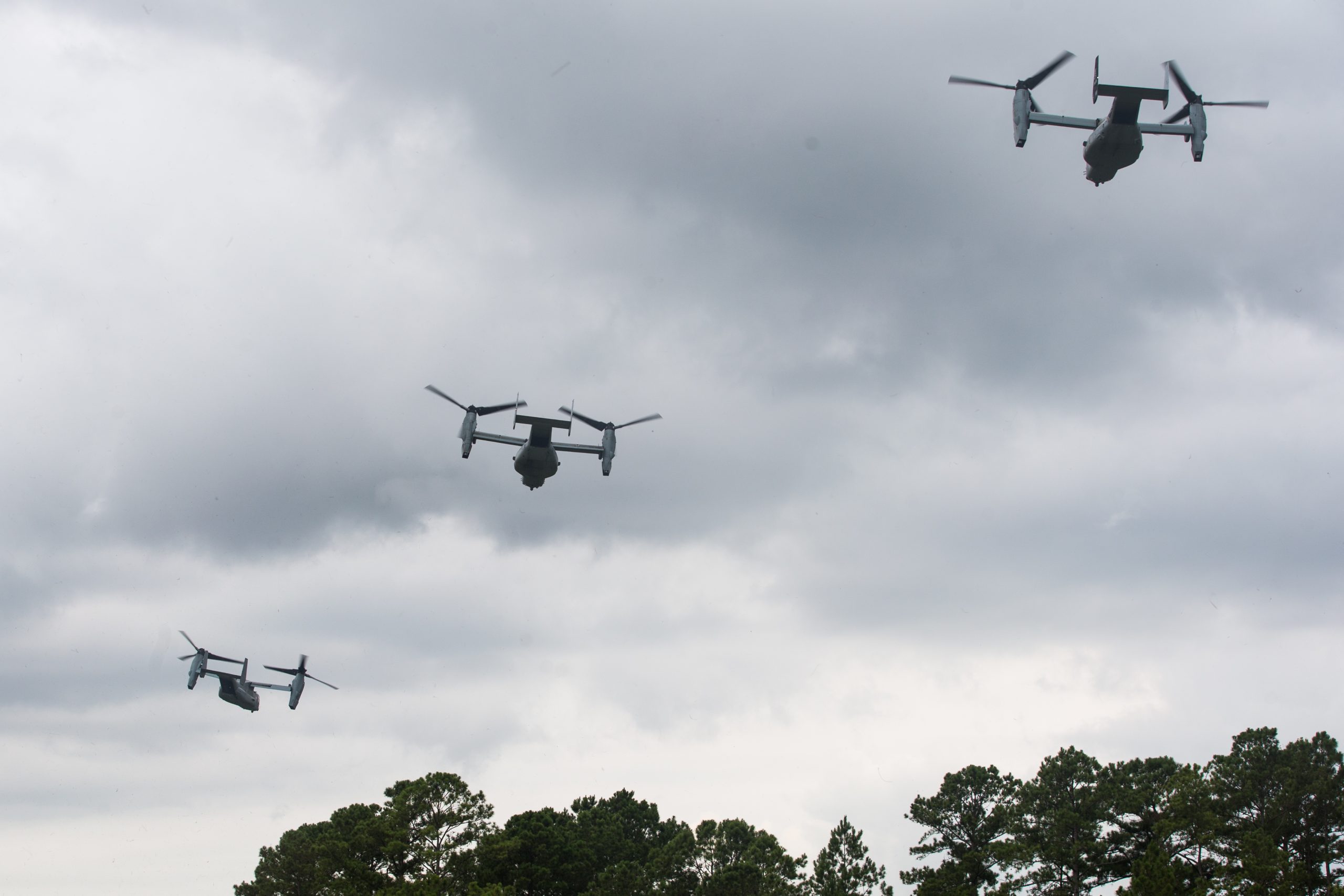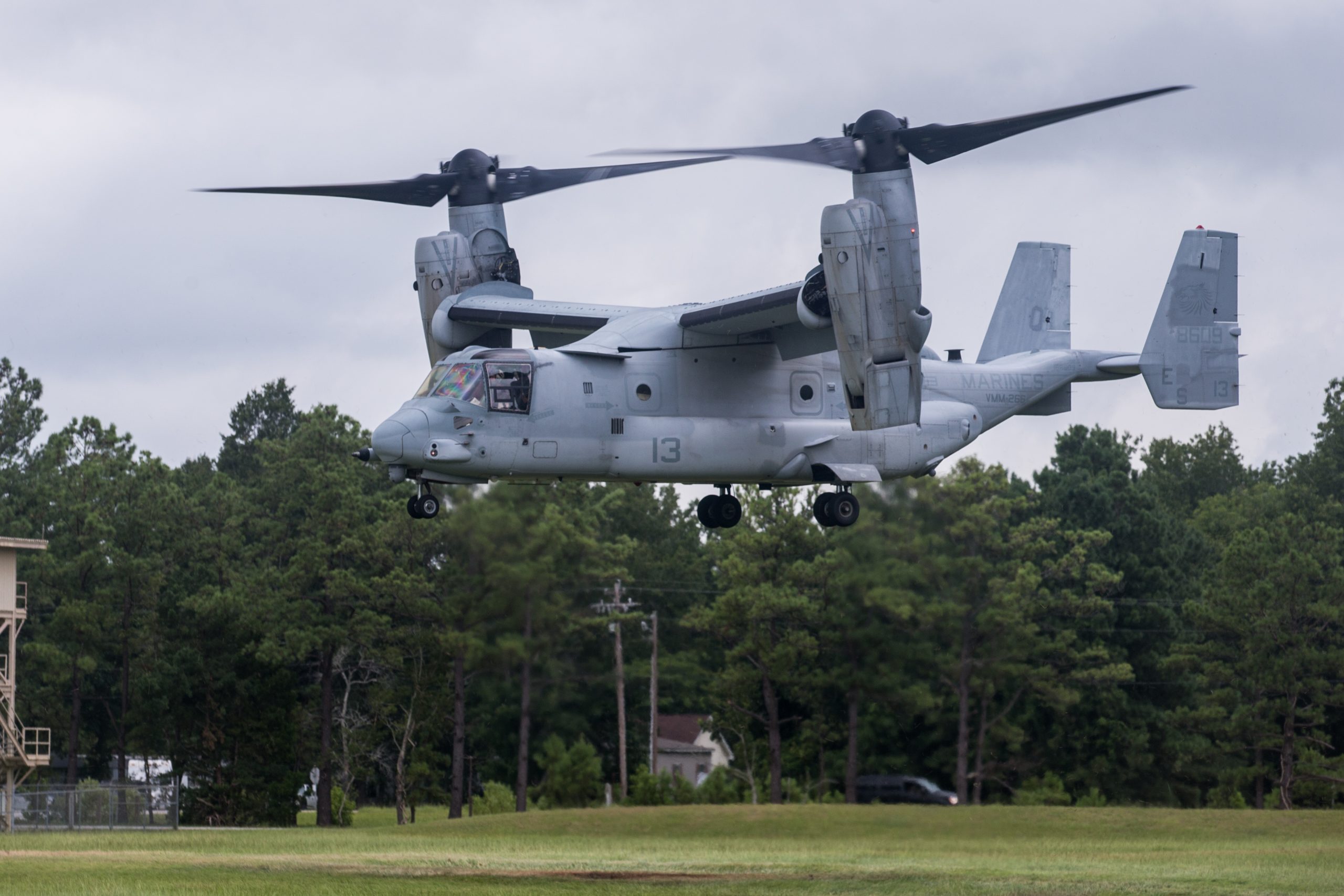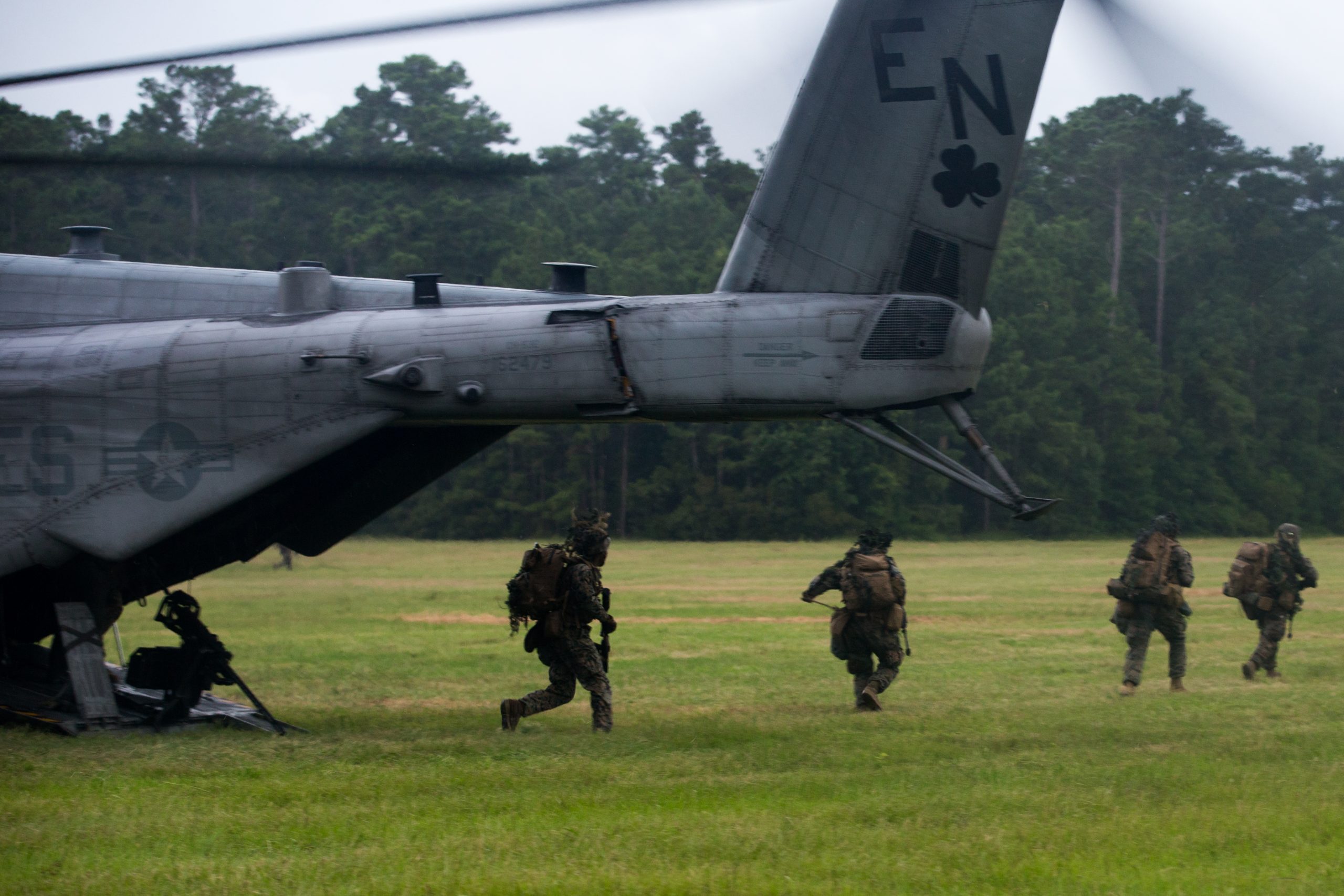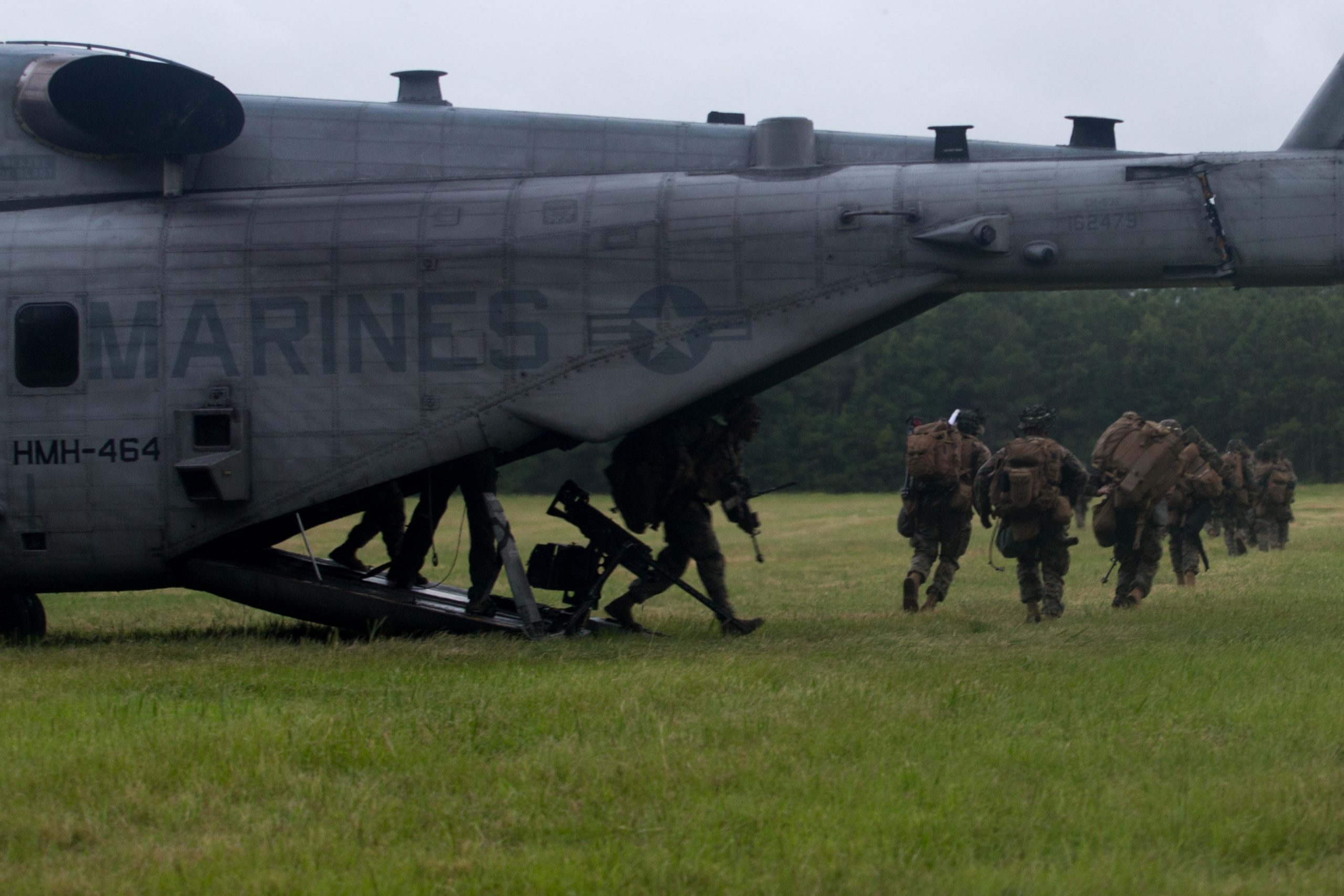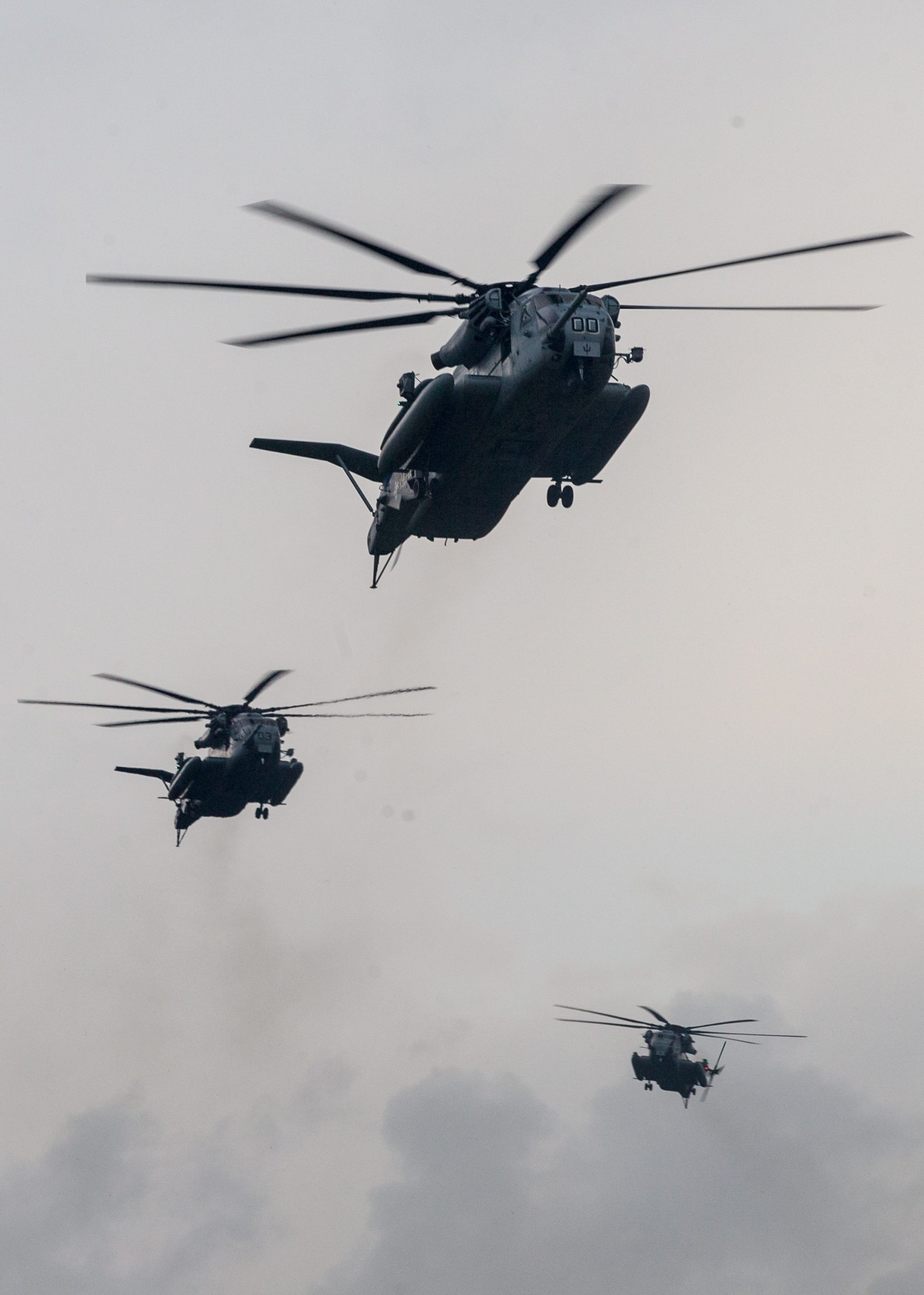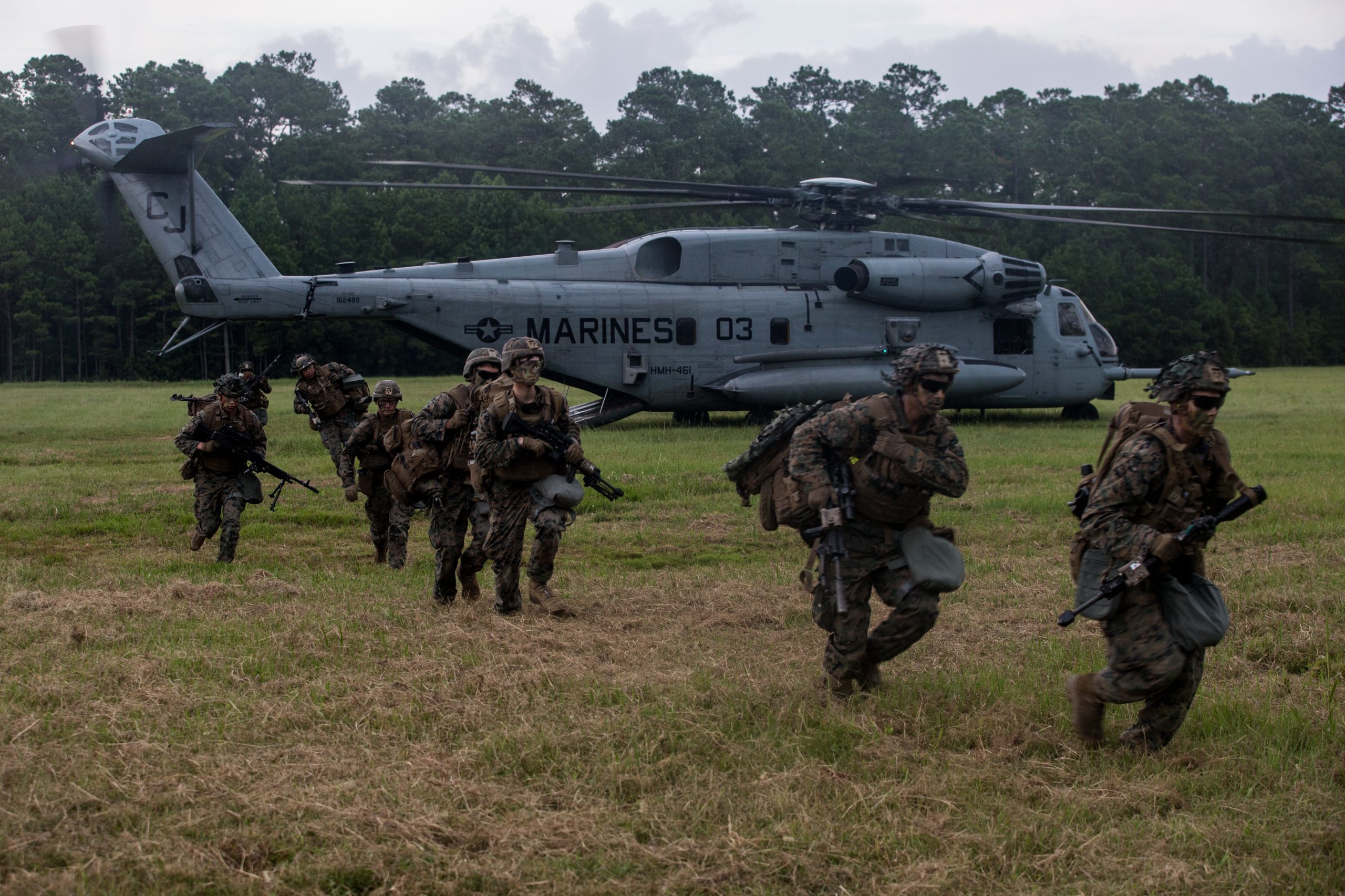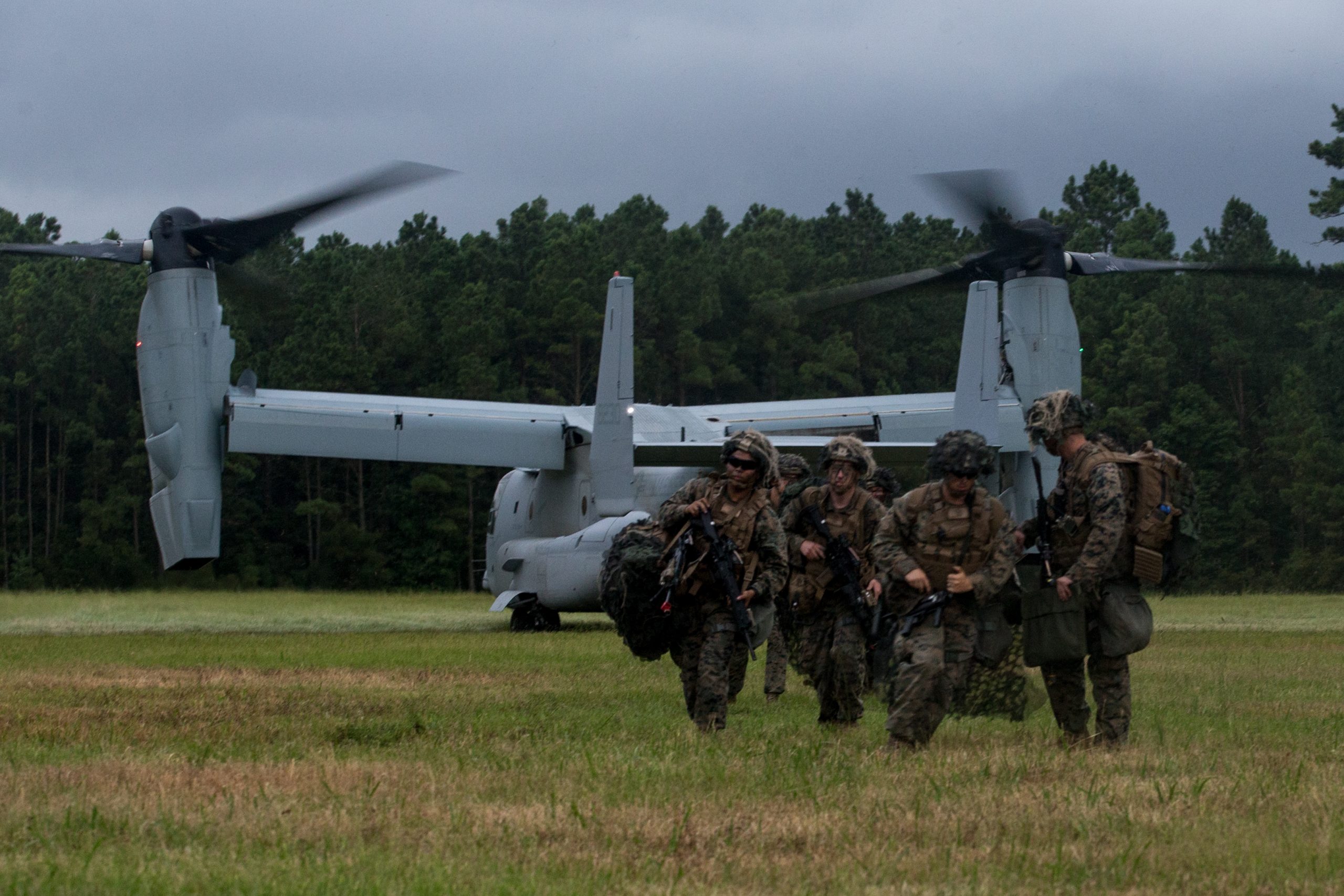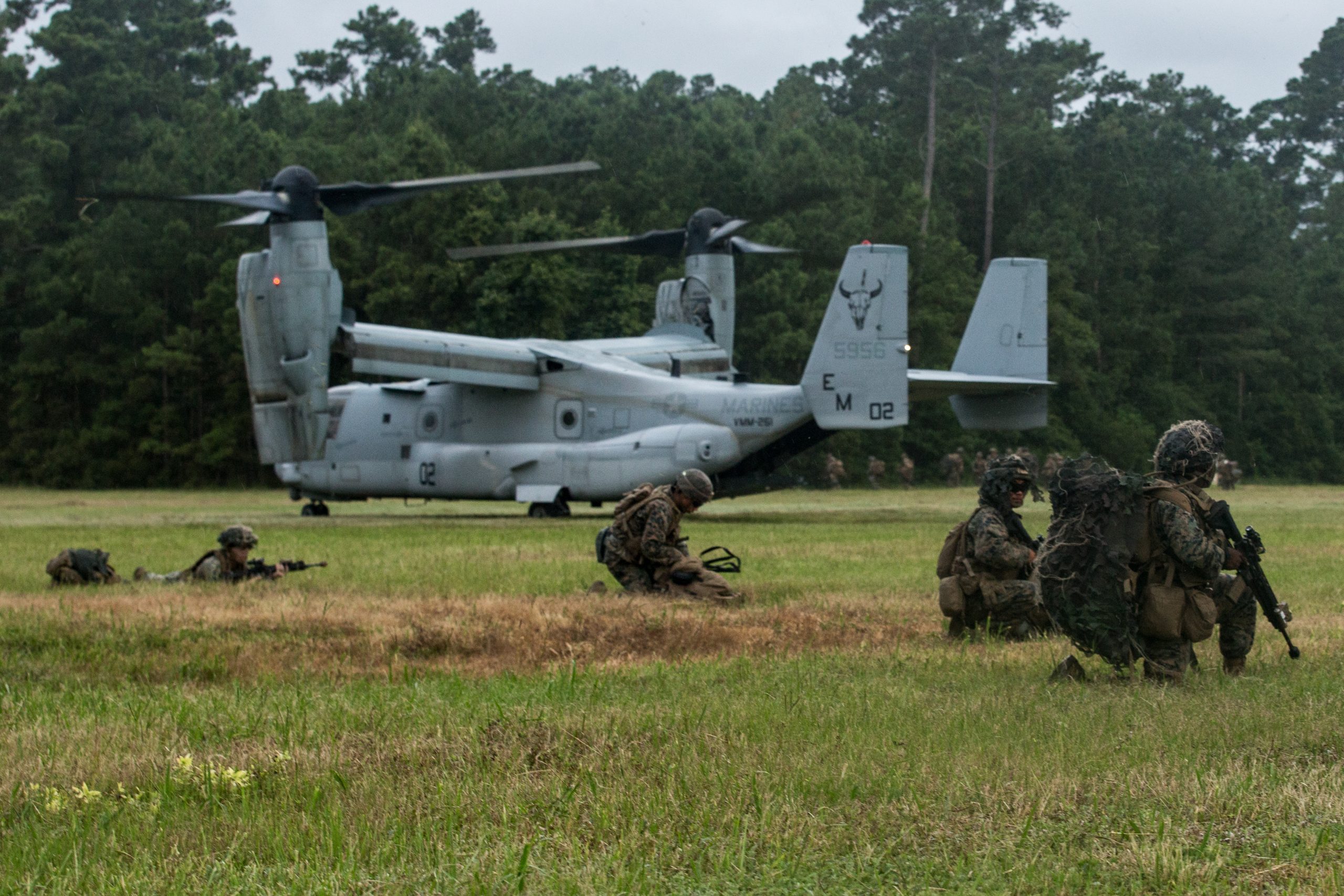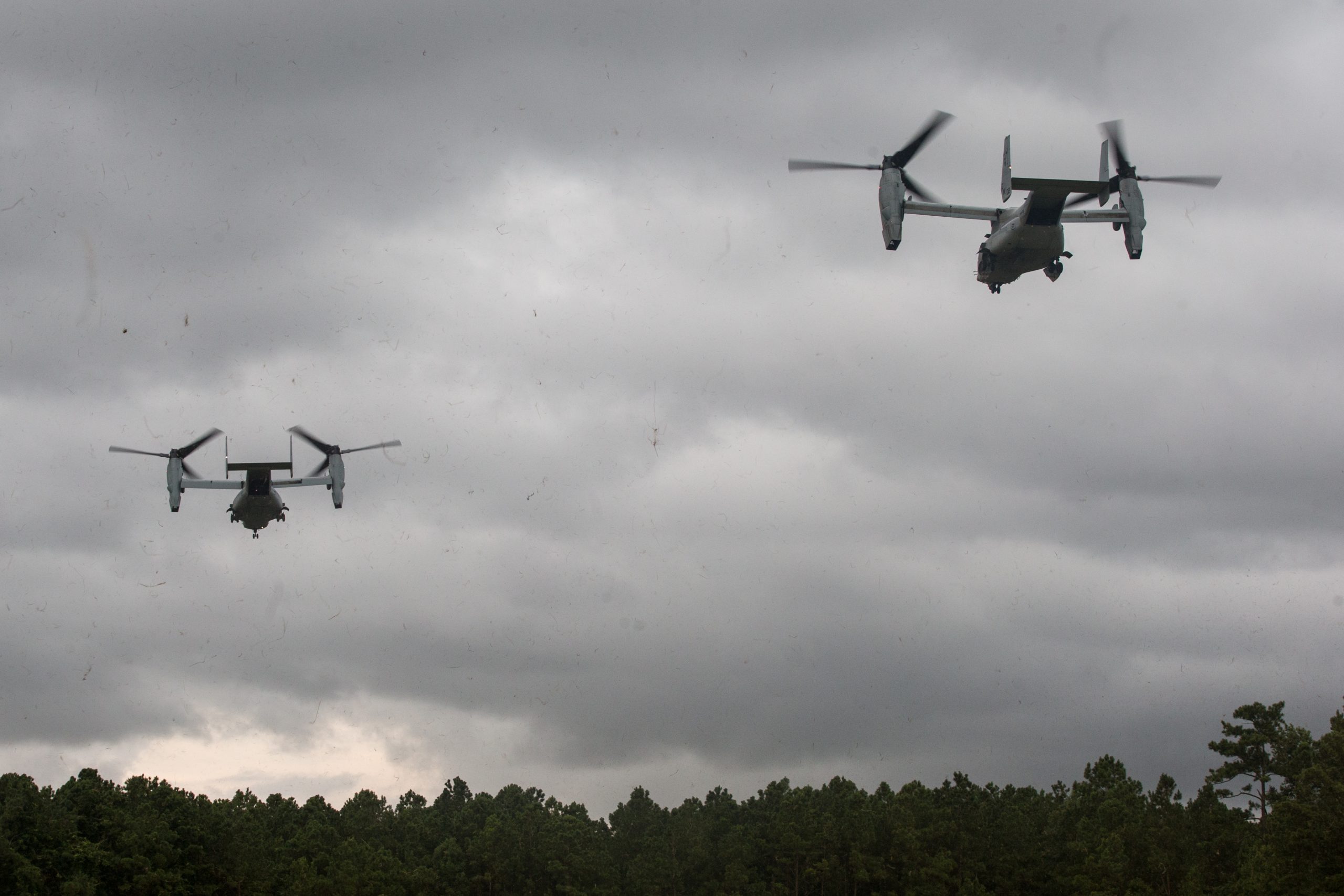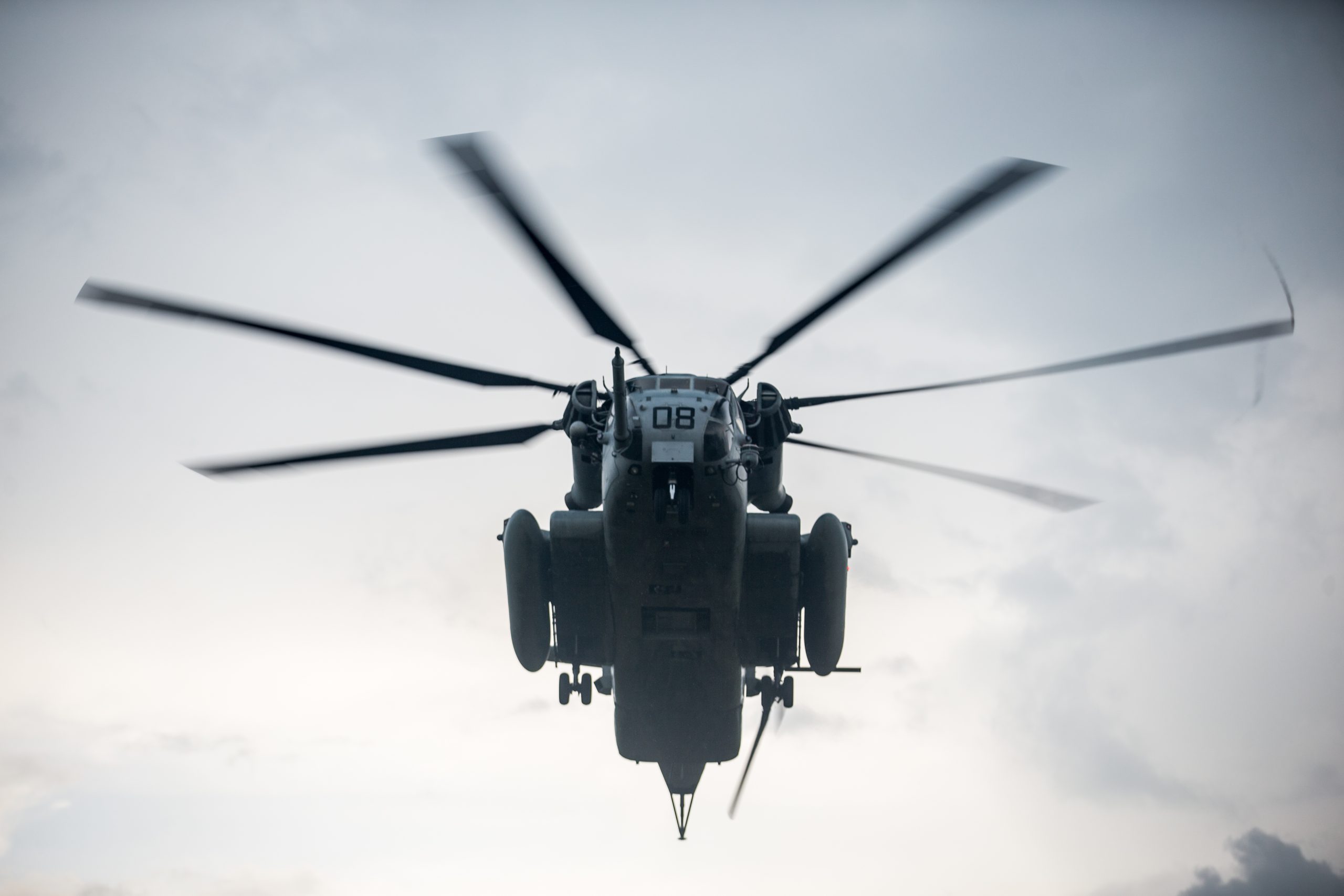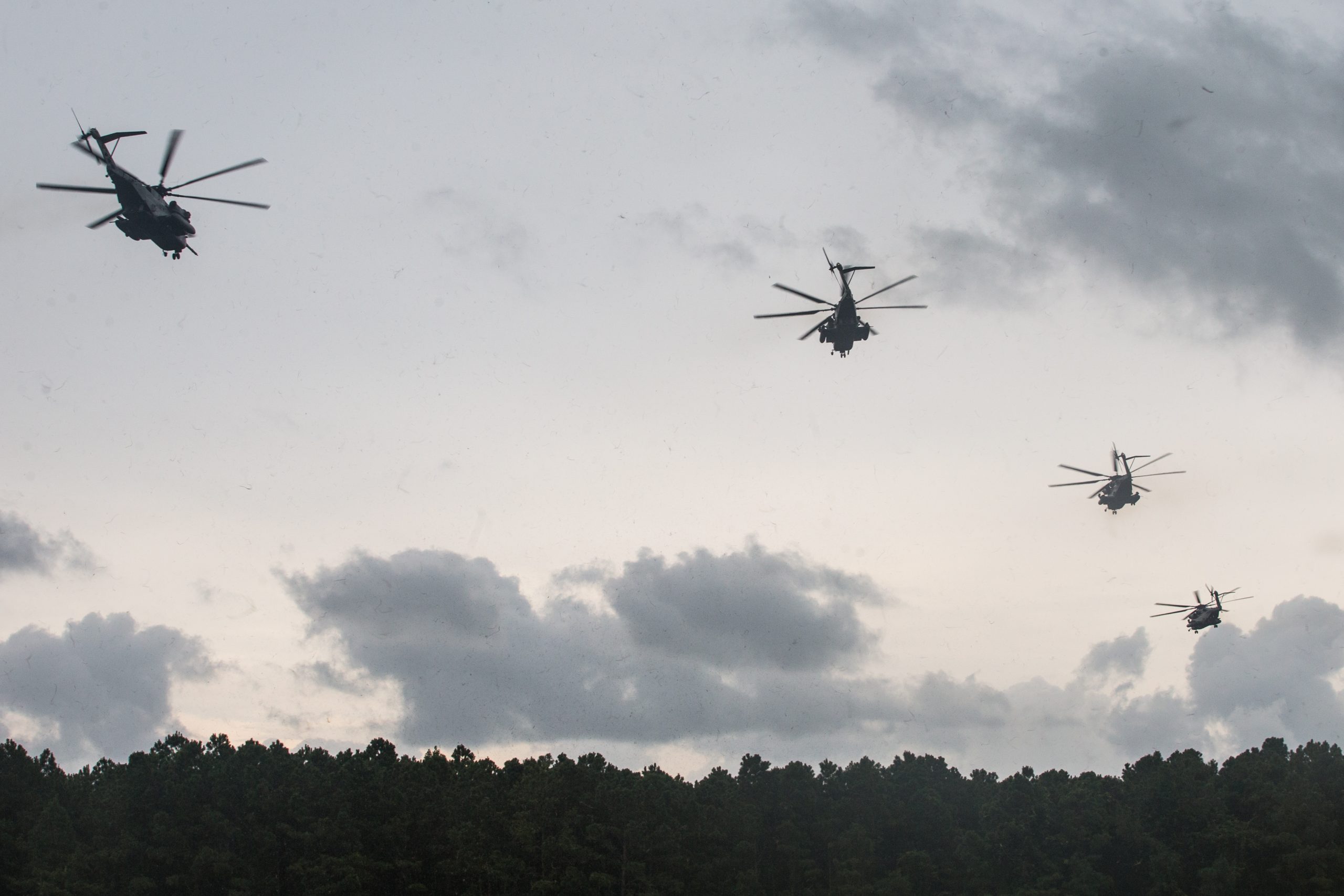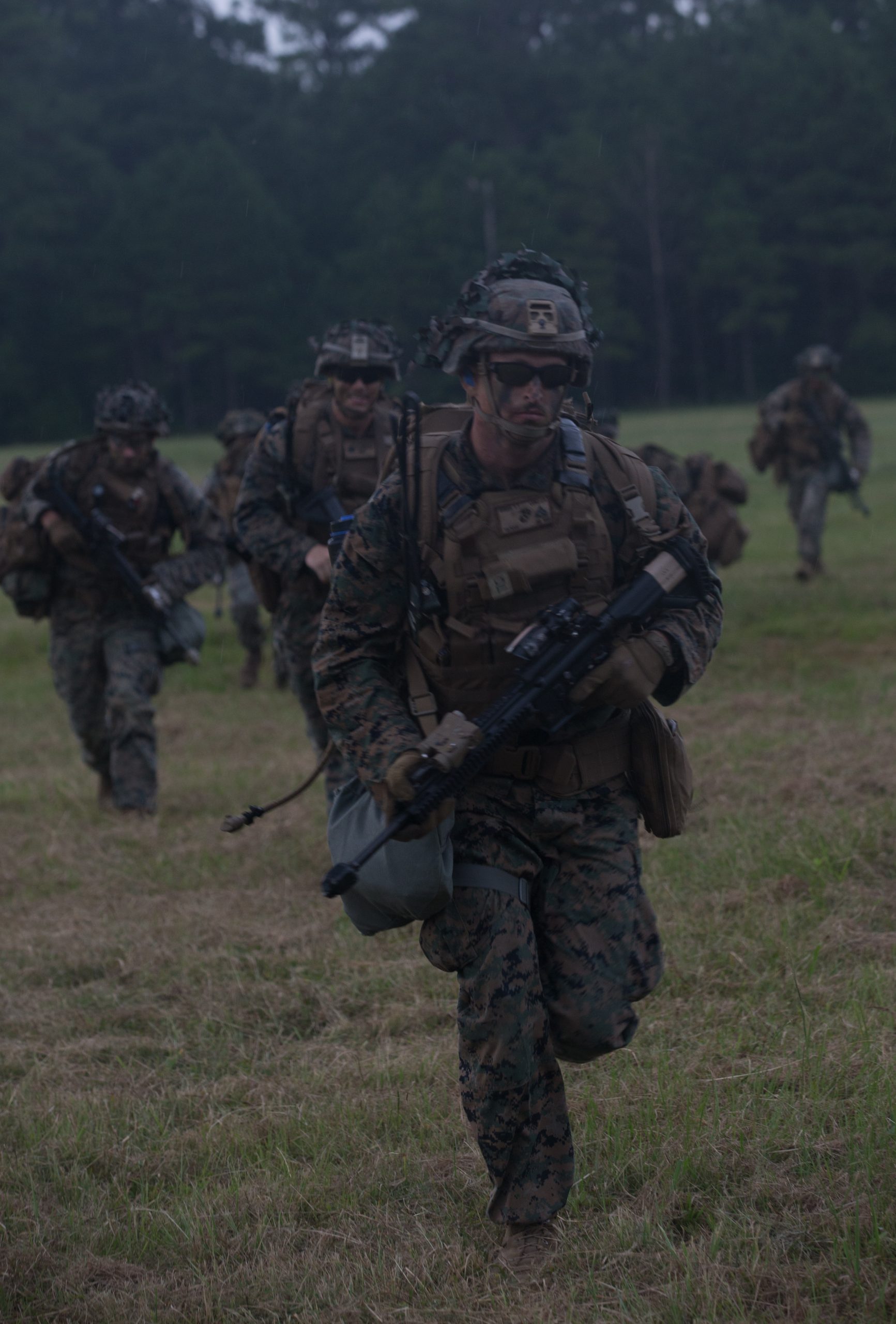By Robbin Laird
Last July, North Carolina-based Marines organized an exercise in which they called Deep Water.
In a press release from November 5, 2020, this is how II Marine Expeditionary Force described the exercise:
“Marines with 2nd Marine Division, 2nd Marine Logistics Group, and 2nd Marine Aircraft Wing are conducting Exercise Deep Water at Marine Corps Base Camp Lejeune, N.C., 29 July 2020.
“II MEF conducts these training events on a consistent basis. This year, Exercise Deep Water will see two battalions conduct an air assault in order to command and control many of the various capabilities organic to II MEF in preparation for major combat operations.
“Exercise Deep Water 20 is a great opportunity for the Division to work with aviation units from Marine Corps Air Station New River and the Logistics Combat Element, as well. 2nd Marine Regiment will be the provide command and control over the 2nd battalion, 2nd regiment, and 3rd battalion, 6th regiment, the logistics and aviation units.”
Additionally, 2nd Marine Division provided further details about the exercise in a press release dated November 5, 2020:
“A Regimental Combat Team (RCT) commanded by 2d Marine Division’s 2d Marine Regiment undertook a two-battalion air assault to commence Exercise Deep Water today on Camp Lejeune (CLNC). At nearly double the size of last year’s Exercise Steel Pike, Exercise Deep Water is the largest exercise of its type conducted on Camp Lejeune in decades.
“Exercise Deep Water is a 2d Marine Regiment-planned and led event that incorporates elements from across the II Marine Expeditionary Force Marine Air Ground Task Force (MAGTF). The participating Marines and Sailors will be engaged in a dynamic force-on-force scenario against a “peer-level adversary,” as simulated by 2d Marine Division’s Adversary Force Company.
“Exercise Deep Water, a regimental air assault that utilizes the whole of CLNC and the outlying training areas, will allow us to sharpen our spear and help make us more lethal,” said Col. Brian P. Coyne, commanding officer, 2d Marine Regiment.
“With Marine air (2d Marine Aircraft Wing) serving as part of a robust team that incorporates every element of the MAGTF, this exercise provides an opportunity to display the unparalleled lethality of a well-orchestrated Marine fighting force. As ‘RCT-2’ takes on an independent-thinking adversary, the ability of our squads to shoot, move, communicate, evacuate and employ effective combined arms with excellence will be put to the test.”
“In addition to the air assault, 2d Marine Regiment will be conducting offensive, defensive, and stability operations in multiple urban training settings where both conventional and hybrid adversary forces will be acting against them.
“Exercise Deep Water continues to build upon 2d Marine Division’s priority to build readiness against peer threats, in accordance with both the National Defense Strategy and the Commandant’s Planning Guidance.
“Accepting and embracing the challenge of such a highly-complex event in these trying times is a reflection of our unit’s commitment to remaining prepared for major combat operations or unexpected contingency operations, Coyne said, adding, “Along with the rest of the world, our adversaries are watching to see if we drop our guard; the visible enhancement of 2d Regiment’s combat readiness during Deep Water will help assure our enemies that they should not test our Corps.
“This training event will improve our warfighting proficiency and prepare us for tomorrow’s battles. ‘Tarawa’ (2d Marines call sign) Marines will fight and win if called,” he concluded.”
During my visit to 2nd MAW in the first week of December 2020, I had a chance to discuss the exercise and its focus and importance with Major Rew, the exercise’s air mission commander.
I learned from Major Rew that this exercise combined forces from pickup zones in North Carolina and Virginia.
The exercise consisted of a force insertion into a contested environment, meaning they used air assets to clear areas for the Assault Force, which included both USMC (AH-1Z, UH-1Y, F/A-18A/C/D, and AV-8B) and USAF aircraft (F-15E and JSTARS). Once air superiority was established, the assault force was inserted by USMC MV-22Bs and CH-53Es.
The exercise also included support aircraft such as the KC-130J and RQ-21.
The planning and execution focused on bringing a disaggregated force into an objective area that required integrated C2 with Ground, Aviation, and Logistics Combat Elements.
This C2 functionality was delivered in part by an Osprey operating as an airborne command post with a capability delivered by a “roll-on/roll-off” C2 suite, which provided a chat capability and can be found at a mobile or static command post or even in an airborne C2 aircraft.
The use of MAGTF Tablets (MAGTAB) provided a key means of digital interoperability that allowed for real time information sharing to ground elements and aviators. The MAGTAB provided the visual representation of the integrated effects and outcomes to the command element.
ISR was provided by USMC assets and by a USAF JSTARS aircraft. They used their Network-On-The-Move Airborne (NOTM-A) system to provide interoperability for the commander and assault force.
As Major Rew put it, “I think having the NOTM-A kit on the Osprey is a big win because it provides so much situational awareness. With the Osprey as a C2 aircraft, there is added flexibility to land the aircraft close to whatever operational area the commander requires. There are many capable C2 platforms across the DoD but not all of them also have the ability to immediately land adjacent to the battlefield like the Osprey does.”
One aspect of mission rehearsals the Marines are developing is to leverage Joint assets in support of an assault mission and be able to provide information to that mission force as well.
To be clear, the Marines did not march to the objective area; they flew to their objectives in various USMC lift assets accompanied by USMC rotary wing and fixed wing combat aircraft.
They were moving a significant number of Marines from two different locations, hundreds of miles apart, to nine different landing zones.
As Major Rew explained it, “We were working with a lot of different types of aircraft, and one of the challenges is trying to successfully integrate them to meet mission requirements.”
He added, “As the air mission commander, I was co-located with an infantry colonel who was the overall mission commander. We were in an Osprey for a significant period of time leading the operation from a C2 perspective.”
“In the exercise we sometimes had to solve problems during execution that required rapidly sending information to an asset so that they could complete a crucial battlefield task. We work with commander’s intent from the outset of an operation and this is especially critical during distributed operations.”
The coming of the F-35 to both Air Assaults and Distributed Operations is crucial as well.
According to Major Rew, “They’re an incredible sensor and they have the capability to be able to see what’s happening on the battlefield, assess things real time, and then send that information to the individual who needs to make a decision. Incorporating them into future exercises of this magnitude will be value-added to the entire Marine Corps.”
In effect, the Marines are working on an ecosystem for integrated and distributed force insertion.
As they build out that ecosystem, new ISR, C2 and, strike capabilities that enter the force can be plugged into the ecosystem that will allow for a continued evolution of that system. In that sense, the future is now.
MCSC: NETWORKING ON THE MOVE (NOTM) FAMILY OF SYSTEMS (FOS)
By Concepts and Programs | Marine Corps Systems Command | December 13, 2018
Description
NOTM FoS is a Satellite Communications (SATCOM)-based on-the-move command and control (C2) combat capability for all elements of the Marine Air-Ground Task Force (MAGTF).
Initially fielded in 2013 in response to urgent Marine Corps Forces Central Command (CENTCOM) requirements, NOTM is an Acquisition Category (ACAT) IV(M) program with a budget of $509 million across the Future Years Defense Plan (FYDP) and a total life cycle cost of $1.7 billion.
NOTM provides robust C2 wideband SATCOM capability, three external network enclaves (Secret Internet Protocol Router (SIPR), Non-secure Internet Protocol Router (NIPR) and Coalition) with access to the Global Information Grid (GIG), Next Generation Enterprise Network (NGEN), full motion video, Voice over Internet Protocol (VoIP), and Voice over Secure Internet Protocol (VoSIP) integrated onto United States Marine Corps (USMC) tactical vehicles.
Ruggedized laptops with a full suite of Combat Operations Center (COC) tactical software (Joint Tactical Common Operational Picture (COP) Workstation (JTCW)/Command and Control Personal Computer (C2PC), Advanced Field Artillery Tactical Data System (AFATDS) Effects Management Tool (EMT)) and chat are connected between NOTM Point of Presence (PoP) vehicles to Staff Vehicles via Type 1 encrypted wireless local area networks.
A force multiplier on the battlefield, NOTM provides forward and main integrated C2 capabilities for bounding assaults to the edge of the battlespace; commanders are no longer geographically tethered to the COC. The NOTM capability is currently employed both in ground and air platforms.
Operational Impact
A force multiplier on the battlefield, NOTM provides forward and main integrated C2 capabilities for bounding assaults to the edge of the battlespace; commanders are no longer geographically tethered to the COC. The NOTM capability is currently employed both in ground and air platforms.
Deepwater Assault Insertion Exercise, July 2020 from SldInfo.com on Vimeo.


